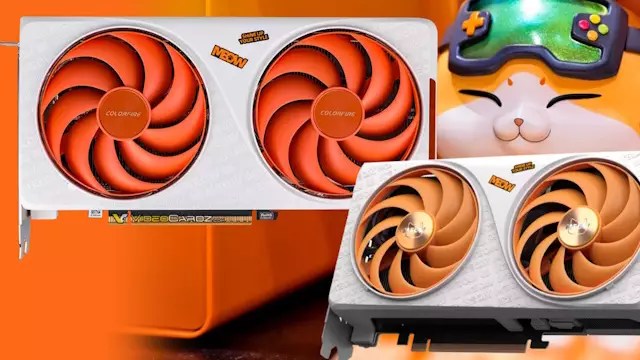In the ever-evolving world of graphics processing units, manufacturers are always on the lookout for innovative ways to stand out in a crowded market. Enter Colorful, a Chinese brand notorious for its daring designs and unique product lines. Recently, they unveiled two new graphics cards under the vibrant and quirky Colorfire Meow series, which features NVIDIA’s latest RTX 5050 technology. While the bright orange aesthetic is eye-catching, the strategic reasoning behind these new releases is perplexing, provoking a myriad of questions about their market viability and intended audience.
NVIDIA’s Unexpected Launch
NVIDIA’s rapid announcement of the RTX 50 series caught many off guard, including enthusiasts who were anticipating a more gradual reveal. The speed at which these new cards hit the shelves raises eyebrows when compared to the expectation set by previous leak cycles. Equipped with specs reminiscent of the already potent 40 series, the RTX 5050 promises impressive features, including DLSS 4—NVIDIA’s cutting-edge AI-enhanced approach to gaming graphics. Yet, this sense of excitement is juxtaposed with the bewildering choice to introduce the Colorfire Meow cards, which some might argue occupy a puzzling place in the product hierarchy.
Understanding the Dual Lineup
What makes the Colorfire Meow series particularly intriguing is its simultaneous launch alongside Colorful’s iGame Ultra lineup featuring the same 5050 chip. The iGame Ultra cards are designed with performance in mind, available in both dual and triple-fan options, adorned with a sleek white and pink finish. However, the Meow series appears to shift the focus towards a more whimsical, experimental approach—a bold move that seems intended to capture a different demographic. Nonetheless, one has to wonder: what specific demographic is Colorful targeting with this unique presentation?
The Colorfire Meow cards feature an endearing design, with embossed prints and bold cat motifs that resonate with gaming enthusiasts who favor personalization and flair in their builds. Yet, the association of high performance with such an unconventional design raises questions about the practical appeal of these GPUs.
A Frustratingly Complicated Market Position
Despite the charming appearance, the Meow series finds itself in a complicated position within the GPU landscape. While potential buyers may be attracted by their visually striking looks, the overall performance expectations could lead to disappointment. The specs suggest these cards might offer power levels similar to a relatively aging RTX 4060; a hard pill to swallow for new buyers looking for cutting-edge technology at competitive prices. The question remains: do consumers prioritize looks over performance in this instance? The stakes feel particularly high for Colorful, as they risk losing the confidence of tech-savvy gamers who prioritize performance above all else.
The Future of Gaming Builds
If Colorful’s claims of the Meow series’ cooling abilities are accurate, there may still be an audience for budget-friendly builds that prioritize aesthetics. It opens the door for creative and affordable gaming rigs that stand out visually. The vibrant orange color and whimsical design elements create a refreshing departure from the conventional black or metallic GPUs that dominate the market. However, practical considerations must coexist with aesthetic choices if Colorful is to convince serious gamers that these cards can deliver both style and substance.
Moving forward, it will be essential for Colorful not only to market the unique characteristics of the Colorfire Meow cards effectively, but also to prove that these GPUs can deliver a solid gaming experience. Time will tell if they can effectively navigate this tricky intersection of visibility, performance, and market expectations. The gaming community is undoubtedly watching closely as they try to determine whether this lively endeavor will succeed or stumble in an increasingly competitive landscape.


Leave a Reply